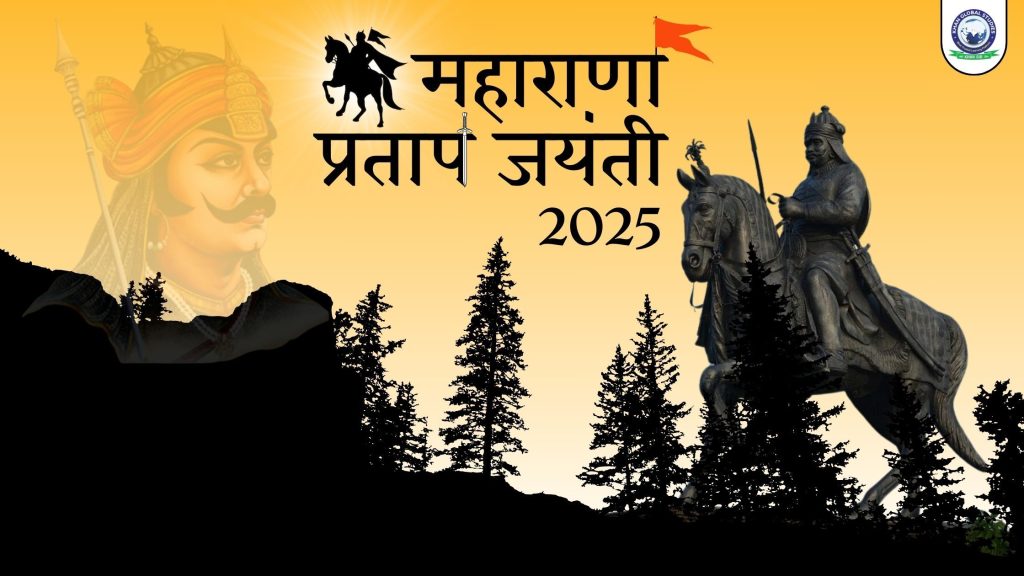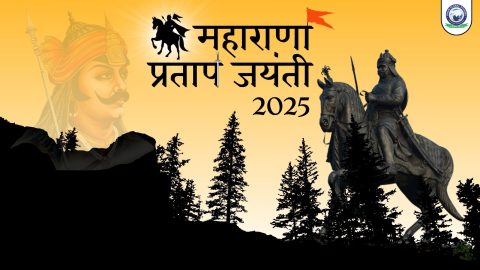Maharana Pratap is one of the greatest heroes in Indian history, whose bravery, pride, and unwavering dedication to his motherland continue to be a source of inspiration today. His life is a shining example of struggle, sacrifice, and self-respect, symbolizing steadfast resistance against the expansionist policies of the Mughals.
Whenever courage, self-pride, and the spirit of independence are mentioned in Indian history, one name that instantly comes to mind is Maharana Pratap Singh Sisodia. He was not just a great warrior but someone who risked his life to uphold his principles.
Early Life
- Birth and Family Background – Maharana Pratap was born on 9 May 1540. His father was Maharana Udai Singh and his mother was Rani Jayawanta Bai. He belonged to the Sisodia dynasty, which ruled the kingdom of Mewar.
- Dispute Over Place of Birth – While most historians believe he was born in Kumbhalgarh (Rajasthan), several other sources, including historian Vijay Nahar and local traditions of Pali, claim that he was born in the royal palaces of Pali district.
- Part 18 of Munshi Devi Prasad’s work Saraswati mentions a copperplate inscription confirming that Pratap’s maternal home was in Pali. Similarly, in a book authored by Somani, there is a mention of Maharana donating land in Pali to Brahmins.
- Signs of Bravery in Childhood – From an early age, Pratap showed courage, fearlessness, and pride. He mastered horse riding, swordsmanship, and warfare. His life from childhood became a symbol of valor.
Ascension to the Throne and Challenges
- Struggle for Succession – Before Pratap ascended the throne, there was an internal conflict over the succession of Mewar. His father Udai Singh II declared Pratap as his heir before his death in 1572. However, Queen Dheer Bai wanted her son Jagmal to become king. But the nobles and ministers of Mewar considered Pratap the rightful successor and crowned him king on 28 February 1572 in Gogunda, on the festival of Holi.
- Taking Charge of Mewar – While the Mughal Empire was expanding on one side, Pratap had to deal with internal politics and external invasions. He united the state and pledged to defend its independence.
Conflict with the Mughals and the Battle of Haldighati
Maharana Pratap refused to accept the suzerainty of Mughal Emperor Akbar, even though many other Rajput rulers had allied with the Mughals. Akbar made several attempts through envoys to persuade Pratap, but he remained firm in his pride. This led to the famous Battle of Haldighati on 18 June 1576, where Pratap’s forces clashed with the Mughal army led by Raja Man Singh.
Pratap’s army had about 3,000 cavalrymen and 400 Bhil archers, while the Mughal army had nearly 10,000 soldiers. After intense fighting, Pratap was injured but managed to escape safely from the battlefield. His beloved horse, Chetak, also attained martyrdom in this battle. Though the battle was inconclusive, it became a symbol of Pratap’s indomitable courage and pride.
Revival of Mewar and Defense of Freedom
Even after the Battle of Haldighati, Maharana Pratap continued his resistance against the Mughals. In 1579, due to rebellions in Bengal and Bihar, Akbar’s attention shifted away from Mewar, which Pratap used to his advantage by liberating many regions of Mewar. By 1585, he had freed most of Mewar, except Chittorgarh, from Mughal control. During this period, he took over 36 Mughal posts and regained important regions like Udaipur, Mohi, Gogunda, Mandal, and Pandwara. This led to improvements in Mewar’s economy and agriculture, and people began returning to their homes.
Patron of Art and Culture
Maharana Pratap patronized many poets, artists, and craftsmen at his court in Chavand. During his reign, the Chavand art style developed. Notable artists like Nasiruddin were part of his court.
Death and Succession
Maharana Pratap passed away on 19 January 1597 in Chavand at the age of 56. It is said that he was injured in a hunting accident. On his deathbed, he made his son Amar Singh I vow never to surrender to the Mughals and to reclaim Chittorgarh.
Legacy and Remembrance
Maharana Pratap is remembered as a legendary hero in Indian history. Tales of his bravery and pride are still alive in folklore, songs, and literature across Rajasthan and other parts of India. In 2007, the then President of India, Pratibha Patil, unveiled a statue of Maharana Pratap in the Indian Parliament.
Maharana Pratap in Popular Culture
Several television series and films have been made based on Maharana Pratap’s life, such as:
- Bharat Ek Khoj (1988–1989)
- Bharat Ka Veer Putra – Maharana Pratap (2013–2015)
- Taj: Divided by Blood (2023)
The life of Maharana Pratap teaches us that self-respect, freedom, and dedication to the motherland should always come first, no matter the circumstances. His story will continue to inspire generations to come.





